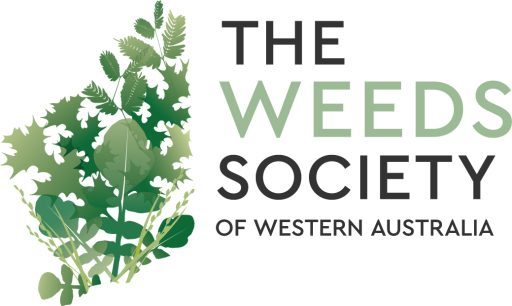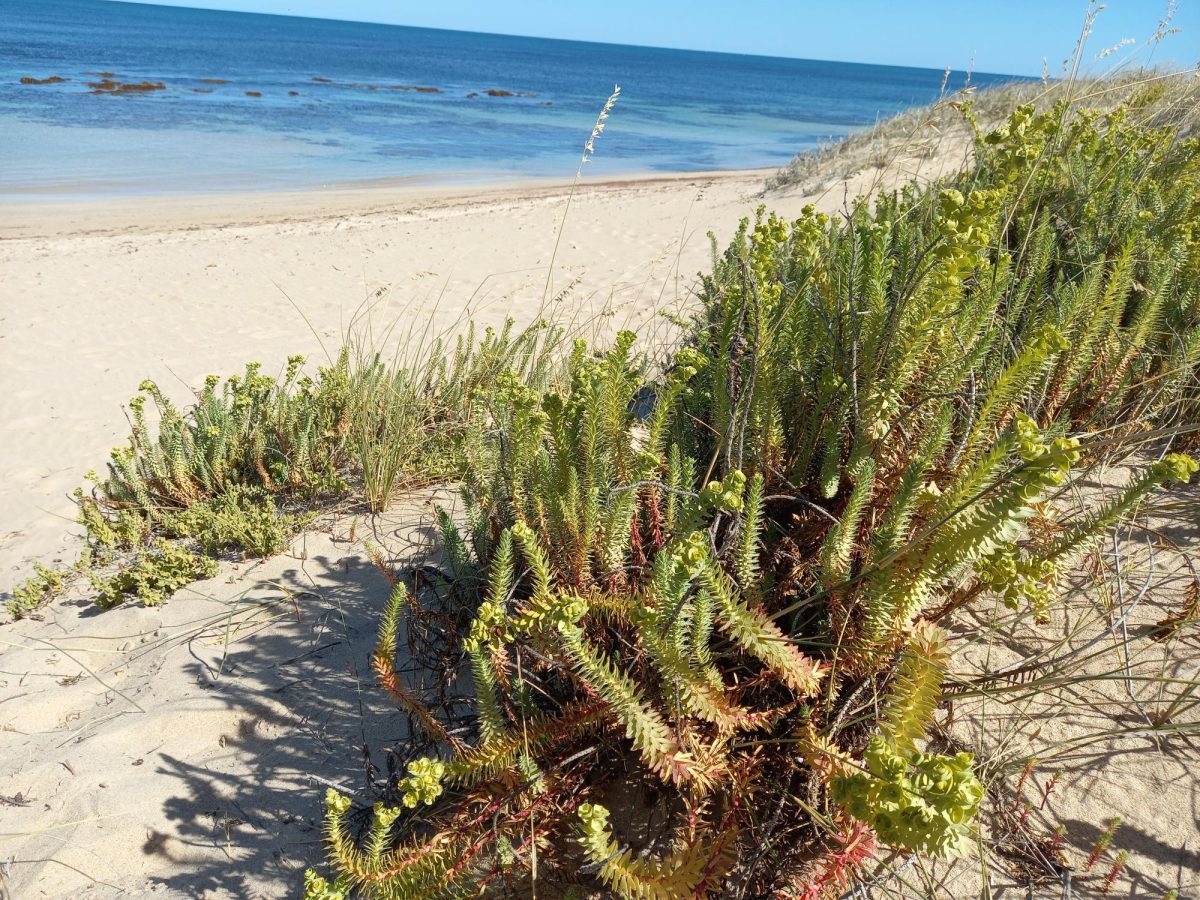History
Ecologist Peter Heyligers reported in The Western Australian Naturalist (Vol 18(1)) in his article Sea spurge (Euphorbia paralias), a strandline pioneer new to the Perth region:
In October 1987 I found a single plant of another introduced strandline pioneer, Sea Spurge, established at Coogee Beach, not far from Woodmans Point. Its presence there, however, was short-lived; when I visited this beach again in September 1988, severe erosion of the upper beach and foredune was evident and the Sea Spurge plant, along with the neighbouring vegetation, had disappeared. No seedlings were found, and an inspection of beaches in the vicinity of Woodmans Point located no other Sea Spurge plants. Nevertheless, I expect that sooner or later this species will turn up again in the Perth region”
His observation ran true, and it’s now a dominant foredune invader as far north as Lancelin, while was previously known to be in the east to Eucla.
Euphorbia paralias, sea spurge, is native to southern Europe and north Africa and was first recorded in Western Australia herbarium# in Albany in 1927 on the shores of King George Sound. Seeds are buoyant and its quite likely that seeds arrived with shipping movements to the Port of Albany as the weed was soon after found at Port Victoria in South Australia (Heyligers 1989).
Ecology biology and phenology
Sea spurge is a perennial coastal coloniser, surviving well on beach sand and has a deep tap root that enables it to survive the extremes of coastal dune movement. Its not uncommon to find clusters of what appear to be sea spurge seedlings, only to find they are the tips of a mature plant deeply buried in sand. Bushes are between 20cm-1m high, depending on the sand. Like most Euphorbia species, sea spurge is not palatable to vertebrates as they exude a toxic, and bitter latex sap that can cause irritation to skin and eyes. Sea spurge is a prolific fruiter, with 1000s of seeds produced each year in summer.
Sea spurge in Western Australia is found on most southern beaches and can form dense stands. In eastern Australia, particularly Tasmania sea spurge deprives shore birds of habitat, and is a direct threat to at least three migratory birds.
Legislation
Sea spurge is not a declared species in Western Australia.
Control Options
Sea spurge is often controlled with herbicide and hand weeding, but a persistent seed bank will mean ongoing efforts are required.
Sea spurge is a target for biological control, with a rust fungus released in 2020 (https://research.csiro.au/nswweeds/sea-spurge). Trial sites for rust establishment are being monitored in Tasmania, Victoria and NSW. It is anticipated that sites for rust establishment will be set up in Western Australia in late 2023.
#Notes in Heyligers (1989), but this record is not available on the Atlas of Living Australia.
References
Heyligers, P (1989). Sea spurge (Euphorbia paralias), a strandline pioneer new to the Perth region. The West Australian Naturalist 18(1) p1-6. https://www.biodiversitylibrary.org/item/275547

